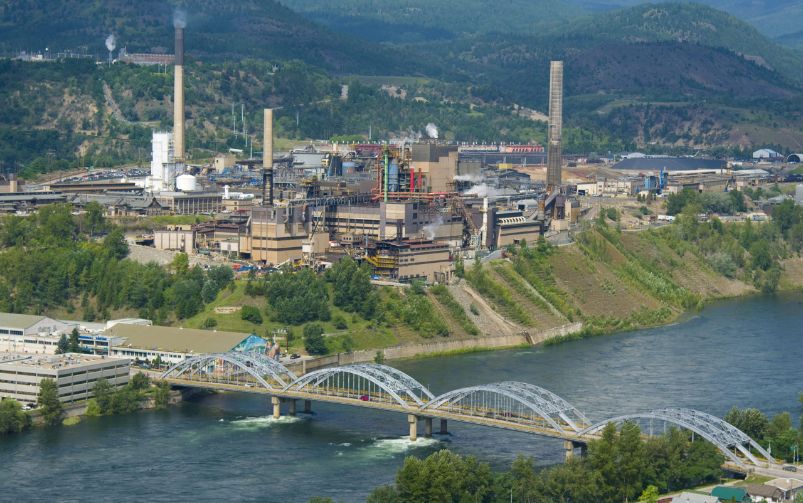Rise Air has already placed an order for three new aircraft and plans to continue modernizing its fleet in the near future.
Cameco and Orano Canada, two of the world’s leading producers of uranium, have signed a 15-year agreement valued at approximately $500 million with Indigenous-owned airline Rise Air.
The deal will ensure reliable transport for Cameco’s and Orano’s workforces to their northern Saskatchewan mines while enabling Rise Air to invest in new aircraft, infrastructure and workforce development.
The Cameco and Orano partnership with Rise Air dates back to 1993, beginning with Orano (then known as COGEMA) and soon after extending to Cameco. Historically, agreements with Rise Air have typically been limited to three years or less. The new 15-year deal represents the longest partnership the companies have signed with Rise Air, giving the airline the security to make major upgrades that will directly support mine operations.
Rise Air currently provides transportation for employees to Cameco’s Saskatchewan operations, including the Cigar Lake uranium mine in the Athabasca Basin and the McArthur River uranium mine and Key Lake mill. The airline also serves Orano’s operations in the province, including the McClean Lake mill—located about 70 kilometres northeast of Cigar Lake—and Orano’s partnership interest in the Cigar Lake mine.
Rise Air is jointly owned by Athabasca Basin Development and Prince Albert Development Corp., whose joint ownership supports the economic growth and community development of 12 First Nations communities and four municipalities. Rise Air operates a fleet of 24 aircraft serving 35 airports across Saskatchewan with scheduled public flights, workforce transportation, cargo deliveries, charter and medevac operations.
Supporting operations in Saskatchewan
Tammy Van Lambalgen, vice-president (VP) and chief corporate officer at Orano, explained that the decision to extend its partnership with Rise Air reflects confidence in the relationship, adding that it also gives Rise Air the assurance it needs to plan for the future and make significant investments in new aircraft and infrastructure.
“We’ve been in this long-term relationship, and it signals to them that we want to continue to be in this relationship,” Van Lambalgen. “We also believe strongly in investing in people closer to our operations, and in particular to [have] partnerships with Indigenous businesses.”
Cameco echoed that view. Dylan Bryngelson, VP of supply chain management at Cameco, said the 15-year extension of its partnership with Rise Air is essential not only to maintain reliable transportation for its northern operations, but also to give the airline the financial stability to move forward with major investments.
“In order for [Rise Air] to make those investments, we wanted to make sure that they had the backing and the financial security, through a long term contract that supported those investments, and ensure that they are able to utilize [new] aircraft over a long-term,” said Bryngelson in an interview with CIM Magazine.
He added that in northern Saskatchewan, employees often travel long distances from their home communities and face harsh winter weather, making it especially important to have a transportation provider that can ensure safe and timely services to worksites.
Investing in the future
Derek Nice, CEO of Rise Air, explained that the recent agreement provides the company with revenue certainty, enabling investment not only in new aircraft and infrastructure, but also in long-term careers for residents of northern Saskatchewan.
As part of its commitment to workforce development, Rise Air announced in August 2024 that it had partnered with Cameco, Orano and other regional and community partners to introduce the Dziret’ái Pilot Training Program, a $1 million initiative that trains Indigenous residents of northern Saskatchewan as commercial pilots. The two-year program, which officially began in January 2025, is training approximately 10 students per session to become professional pilots, with graduates guaranteed positions as first officers at Rise Air.
“[The initiative] will allow us to fund training for residents who can then become pilots and have long-term careers flying for us,” said Nice. He noted that pilot training costs can exceed $100,000 per graduate—a financial barrier that many northern residents cannot manage on their own. With the stability provided by this 15-year agreement, Rise Air can help offset some of those costs while recovering its investment through the long-term employment and retention of trained pilots who continue to serve the region.
The agreement will also allow Rise Air to upgrade its facilities across Saskatchewan and potentially create new employment opportunities beyond its main bases in Saskatoon and Prince Albert, in locations such as La Ronge and Stony Rapids, while also modernizing its fleet.
To strengthen reliability and safety for the customers it serves, Rise Air announced in November 2024 that it would become the Canadian launch customer for the 68-seat ATR 72-600 from French aircraft manufacturer ATR (Avions de Transport Régional)—the most modern turboprop airliner in production—placing a $98 million order for three aircraft. Deliveries are expected to begin later this year, marking the first step in Rise Air’s plan to modernize its fleet by adding new aircraft as older planes are retired.
“Our customers recognized that it’s really difficult for us to invest in long-term assets like new aircraft if we don’t have the certainty that we can amortize the cost of those aircraft over a longer period of time, so I think that was the biggest driver for [Cameco and Orano] to make the transition to 15 years,” said Nice.




